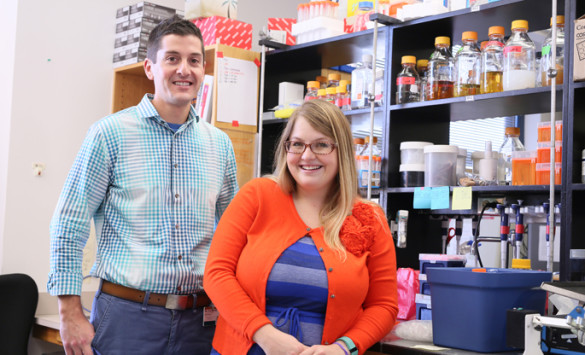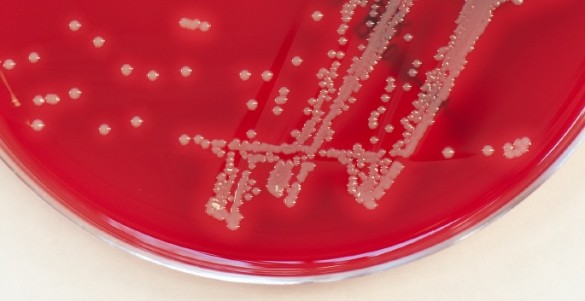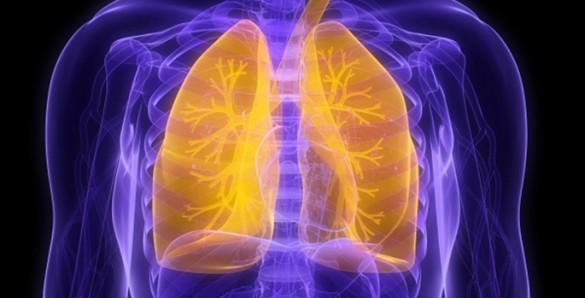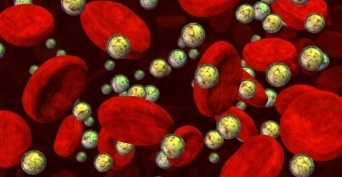
Pseudomonas aeruginosa and Staphylococcus aureus — two pathogens that frequently co-infect the lungs of patients with cystic fibrosis — appear to cooperate with each other, Vanderbilt investigators have discovered. When pseudomonas is starved for metal by the host, it shuts down the production of factors that would normally kill staph, promoting a co-infection.
The findings, reported in the journal Nature Communications, add to our understanding of the role of the host environment — especially metal availability — in shaping microbial communities and may have clinical implications for patients with cystic fibrosis.
The observation that pseudomonas and staph co-infect the lungs of patients with cystic fibrosis has been difficult to explain, said Eric Skaar, Ph.D., MPH, professor of Pathology, Microbiology and Immunology.
“If you put pseudomonas and staph in a tube together, the pseudomonas kills the staph; it completely obliterates it. So how are these organisms able to live together in the same place?” said Skaar, who is also the Ernest W. Goodpasture Professor of Pathology.
In collaboration with Richard Caprioli, Ph.D., director of the Mass Spectrometry Research Center, Skaar and his colleagues used imaging mass spectrometry to explore the distribution of proteins and metals in a pseudomonas biofilm – an organized microbial community. They discovered that in areas of the biofilm with low levels of the metals zinc and manganese, pseudomonas turned off the production of toxins that kill staph.
The researchers then exposed pseudomonas to calprotectin — a host protein that sequesters metals at sites of infection — and found the same response they had observed in the biofilm. They demonstrated that calprotectin promotes co-colonization of mouse lungs with pseudomonas and staph, and they showed that the two pathogens co-exist in calprotectin-enriched areas of lung tissue from a patient with cystic fibrosis.
Calprotectin is part of the innate immune defense system. It “hides” the metals that bacteria need to survive and grow, providing “nutritional immunity” against pathogens. Calprotectin is particularly abundant in the lungs of patients with cystic fibrosis, Skaar said.
The new work shows that pseudomonas responds to calprotectin-dependent metal starvation by turning off its own anti-staph factors. Staph can then colonize the lung and destroy host immune cells.
“We think that pseudomonas might benefit from co-infection with staph,” Skaar said.
Michael Noto, M.D., Ph.D., participated in the studies as a postdoctoral fellow and has now joined the Vanderbilt faculty as assistant professor of Medicine. He will continue to explore host-pathogen interactions in cystic fibrosis.
In another series of studies, Skaar and his colleagues analyzed the response of Acinetobacter baumannii, which also infects the lungs, to metal starvation.
Unlike pseudomonas, which turns genes off in response to calprotectin-dependent metal starvation, A. baumannii turns genes on to help it acquire the zinc it needs.
The bacteria produce a zinc-binding protein that enables the release of zinc from storage sites in the bacterial cells. The findings were published in the journal Cell Host & Microbe.
Skaar’s group collaborates with Walter Chazin, Ph.D., Chancellor’s Professor of Medicine and director of the Center for Structural Biology, on studies involving calprotectin.
Catherine Wakeman and Jessica Moore were co-first authors of the Nature Communications study, and Brittany Nairn was the first author of the Cell Host & Microbe report.
The research was supported by grants from the National Institutes of Health (GM103391, RR026742, ES000267, AI101171, AI109177, GM042569) and by a U.S. Department of Veterans Affairs Merit Award.















